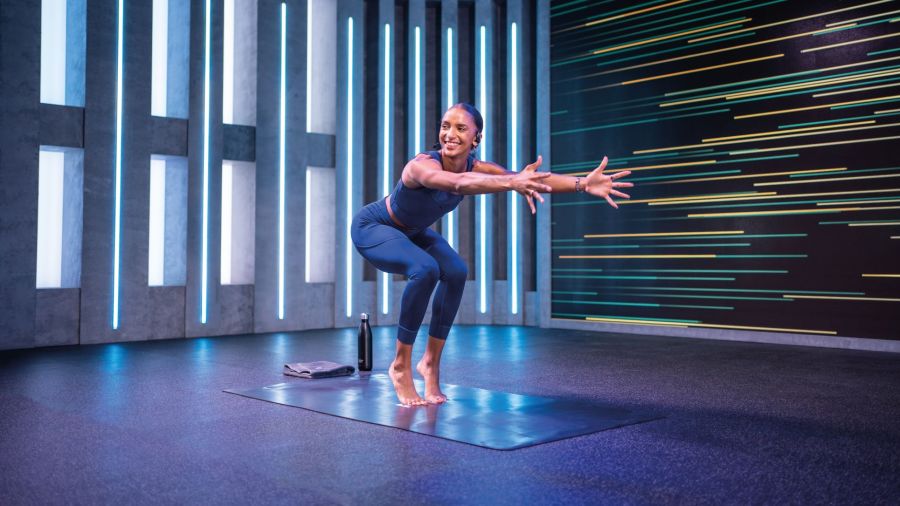Feel strong and energised with this yoga flow workout for runners by Fiit trainer and WF cover star Lina Nielsen…
Read our full interview with Lina Nielsen here.
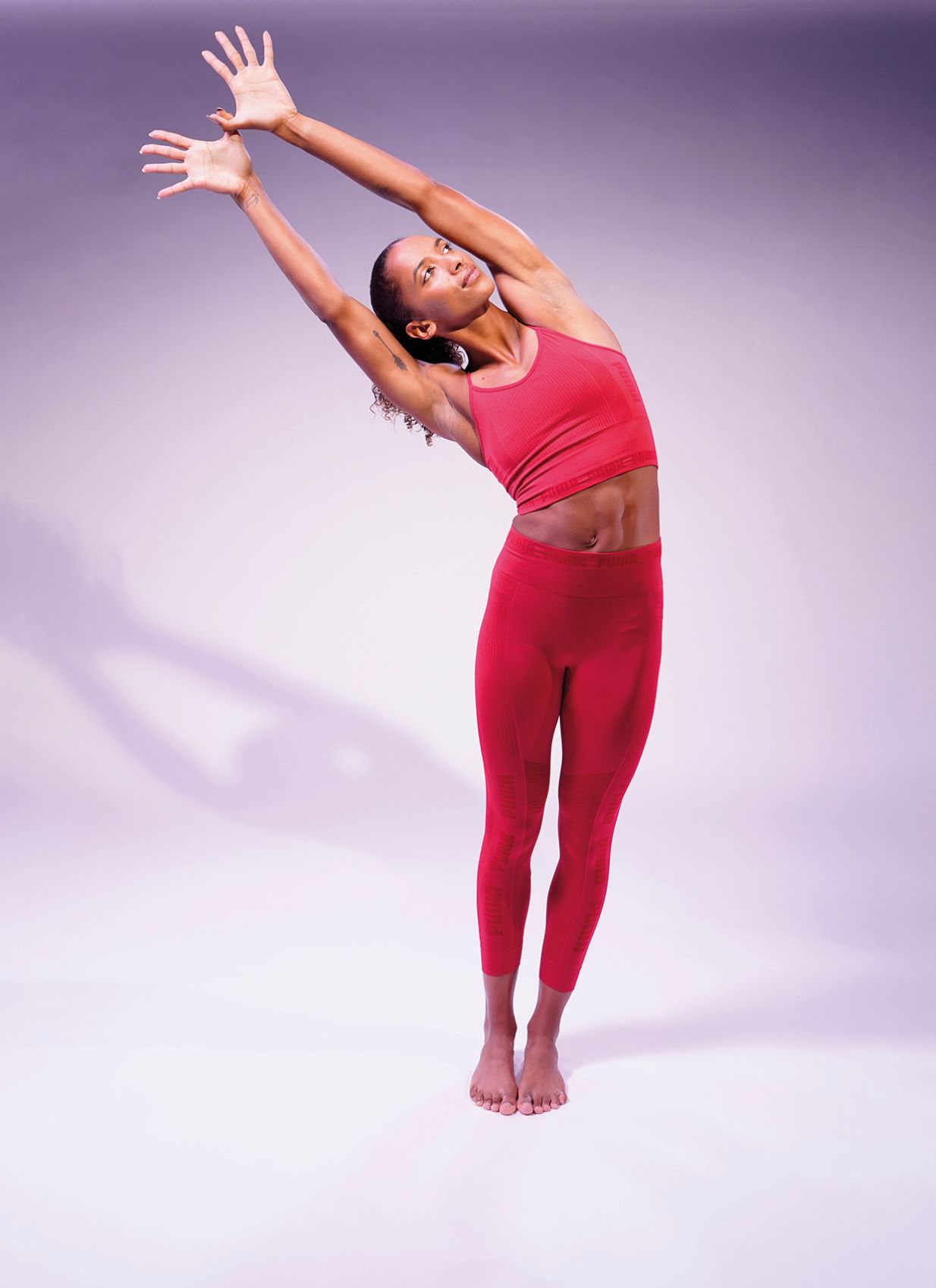
Standing side bend
(parsva urdhva hastasana)
A natural way to stretch and lengthen both sides of your body, whilst strengthening your arms and shoulders.
How to do the standing side bend pose:
- Stand with your feet together ensuring your big toes are touching, with a slight gap between your heels. If it’s more comfortable, stand
with your feet hip-width apart. - Tuck your tailbone under but don’t round your lower back. Draw your belly in and prepare to inhale.
- Inhale and, in a sweeping position, bring your arms up overhead with your palms facing forward. Hook your thumbs together for a lever, keeping your fingers pointing to the ceiling.
- Exhale whilst driving the left side of your hips out and bending your upper torso to the right side, using the hook of your thumbs to pull your top arm down. Relax your shoulder blades and hold for as many breaths you feel is needed (typically, 5-8 breaths). Inhale and come back to centre, then switch sides.
Related: What is yoga? Benefits & basic principles for beginners
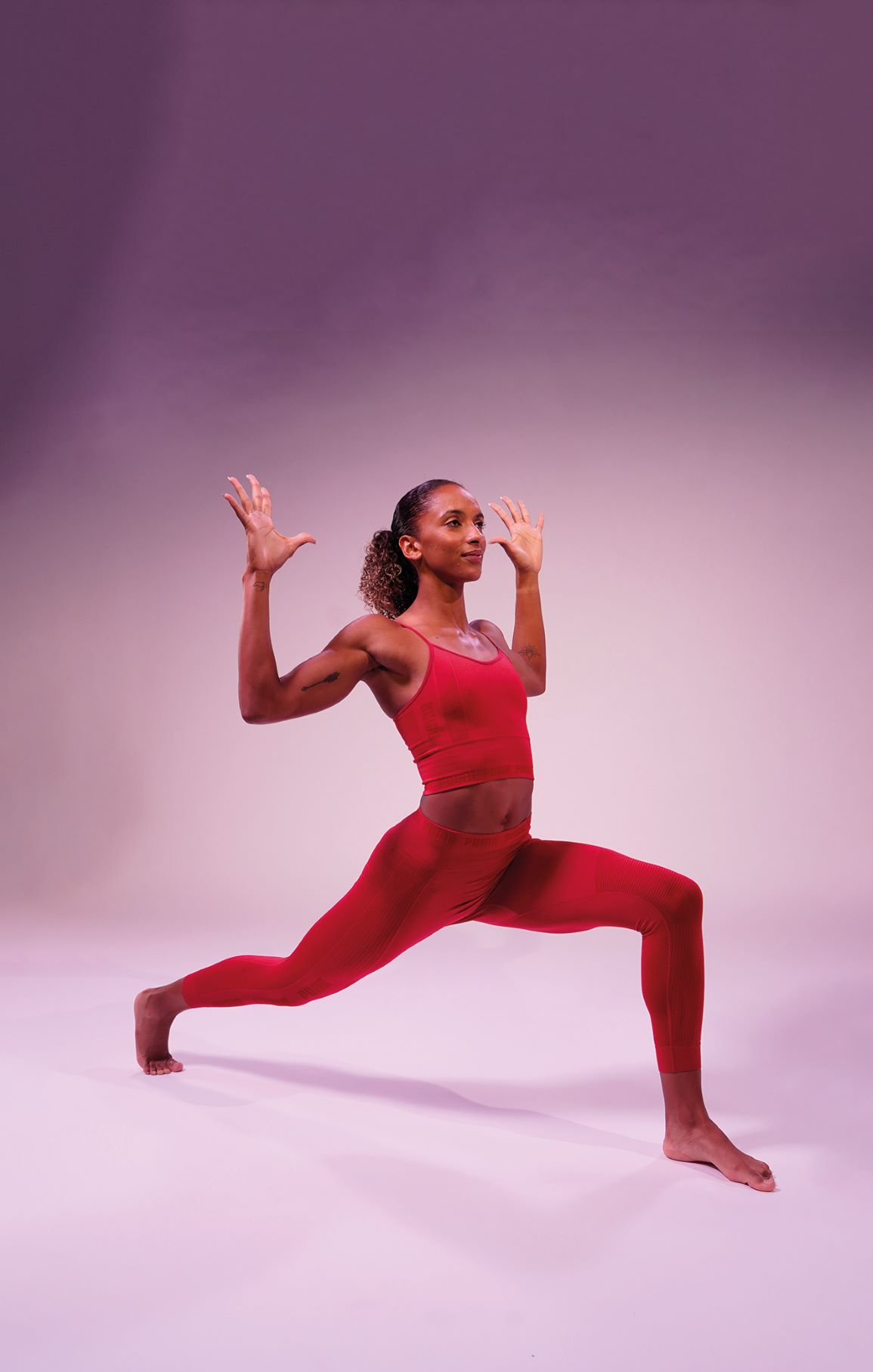
High lunge with cactus arms
(ashta chandrasana)
Stretches the chest, shoulders, arms, neck, torso and muscles of the back.
How to do a high lunge with cactus arms:
- From standing, take a huge step back with one foot to come into a high lunge position with your left foot in front and resting on the toes of your right leg.
- Inhale and bring your arms up overhead with your palms facing forward.
- As you exhale, begin to squeeze through your shoulder blades to bring your elbows down towards your ribcage for a good chest-opening sensation. Option to drop your back knee down towards the mat to feel more of the front of the body opening.
- Hold for 3-5 breaths before switching sides.
Related: Can you lose weight doing yoga?
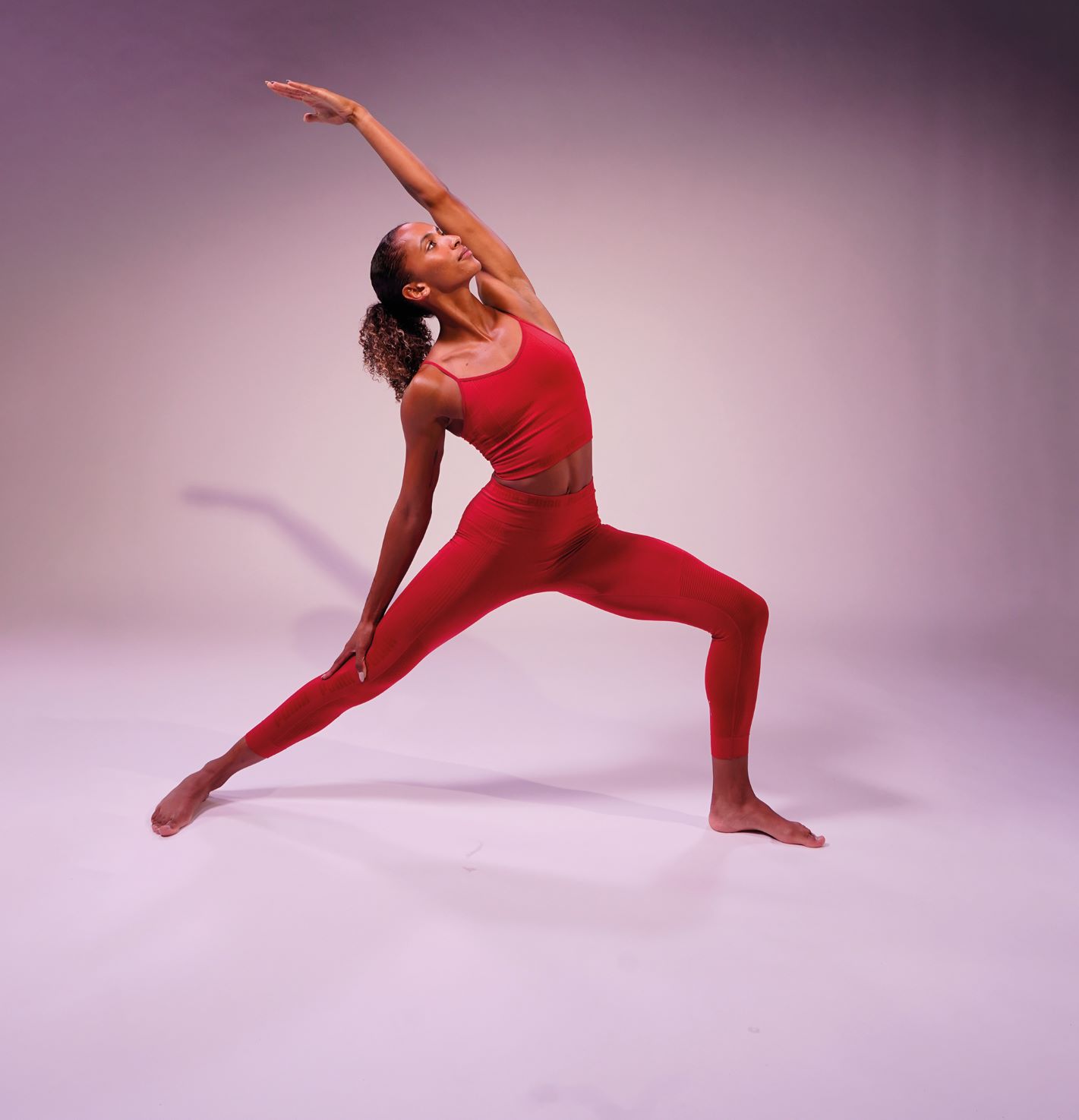
Reverse warrior
(viparita virabhadrasana)
Opens the chest and side body, releasing any tension you may be holding in your upper body. Plus, helps with mobility in the hips and stretches the inner thighs.
How to do reverse warrior:
- Starting from a high-lunge position, begin to rotate your back foot so that the arch of your foot faces the front of your mat.
- As you exhale, rotate your torso to face the side of your mat. Bring your arms parallel to the floor with your palms facing down (warrior 2 position; B). Square your hips and roll your shoulders back, drawing your shoulder blades down.
- As you inhale, reach forward with the front hand and flip the palm to face upwards towards the ceiling.
- As you exhale, sweep your front hand up and overhead, bending your body towards the back of your mat. Your back hand finds a resting position on your back thigh.
- Lift your chest as you come into a gentle backbend and look towards your raised hand (A). Feel your side body open up as you take between 3-5 breaths.
- Come back to the warrior 2 position (B), switch legs and then repeat on the other side.
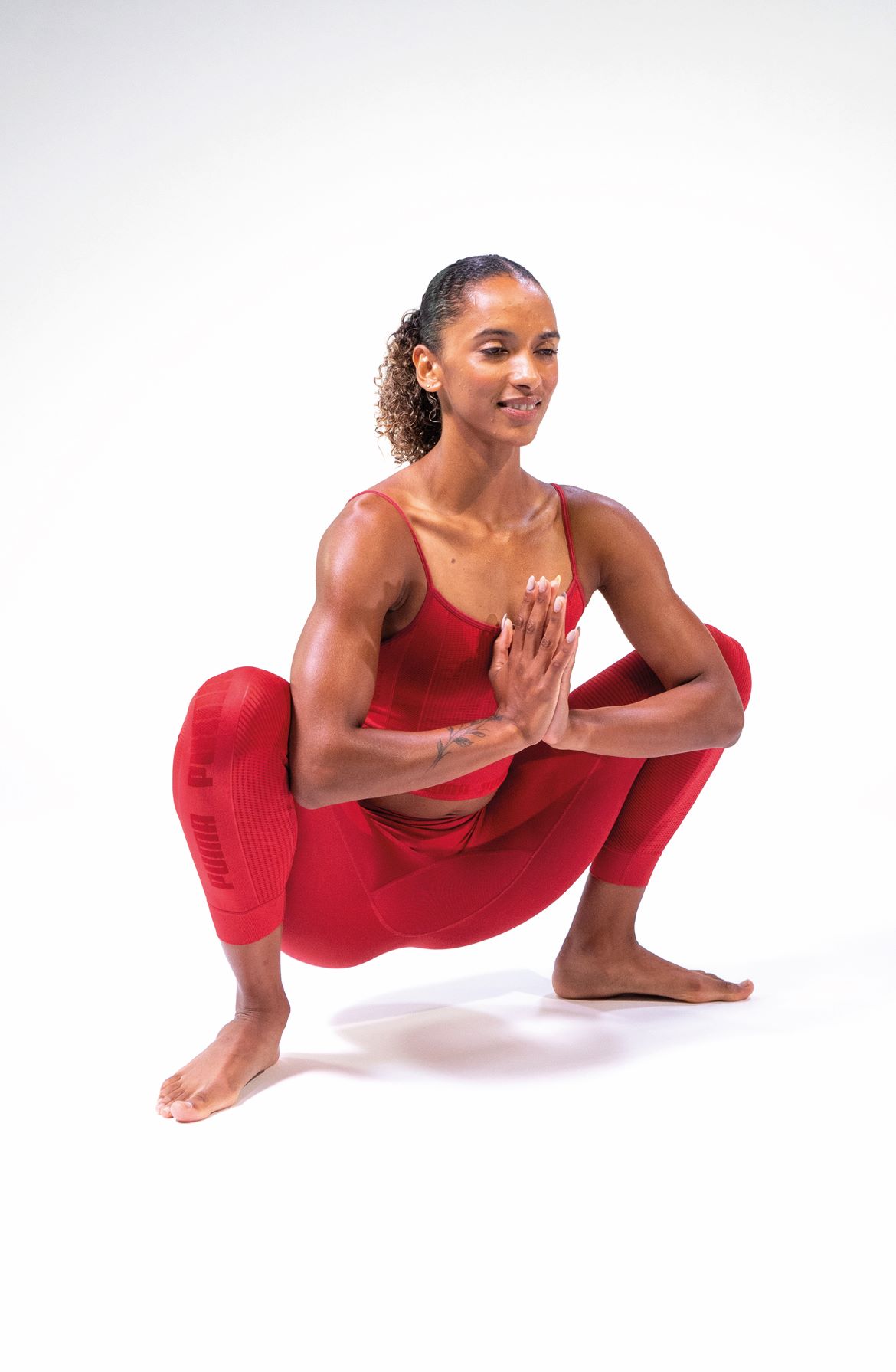
Yogi squat
(malasana)
Improves posture and ankle mobility whilst also strengthening the lower body.
How to do the yogi squat:
- Stand at the top of your mat with your feet positioned slightly wider than hip-width apart and your feet turned slightly outwards.
- Begin to squat down as low as you can. Don’t worry if your heels lift off the mat, but if you want the feet grounded, feel free to move your feet slightly wider apart.
- Bring your palms to touch in a prayer position, hooking your elbows inside your knees to push them apart for a deeper hip opener.
Related: Yogic breathing techniques: how to breathe in yoga
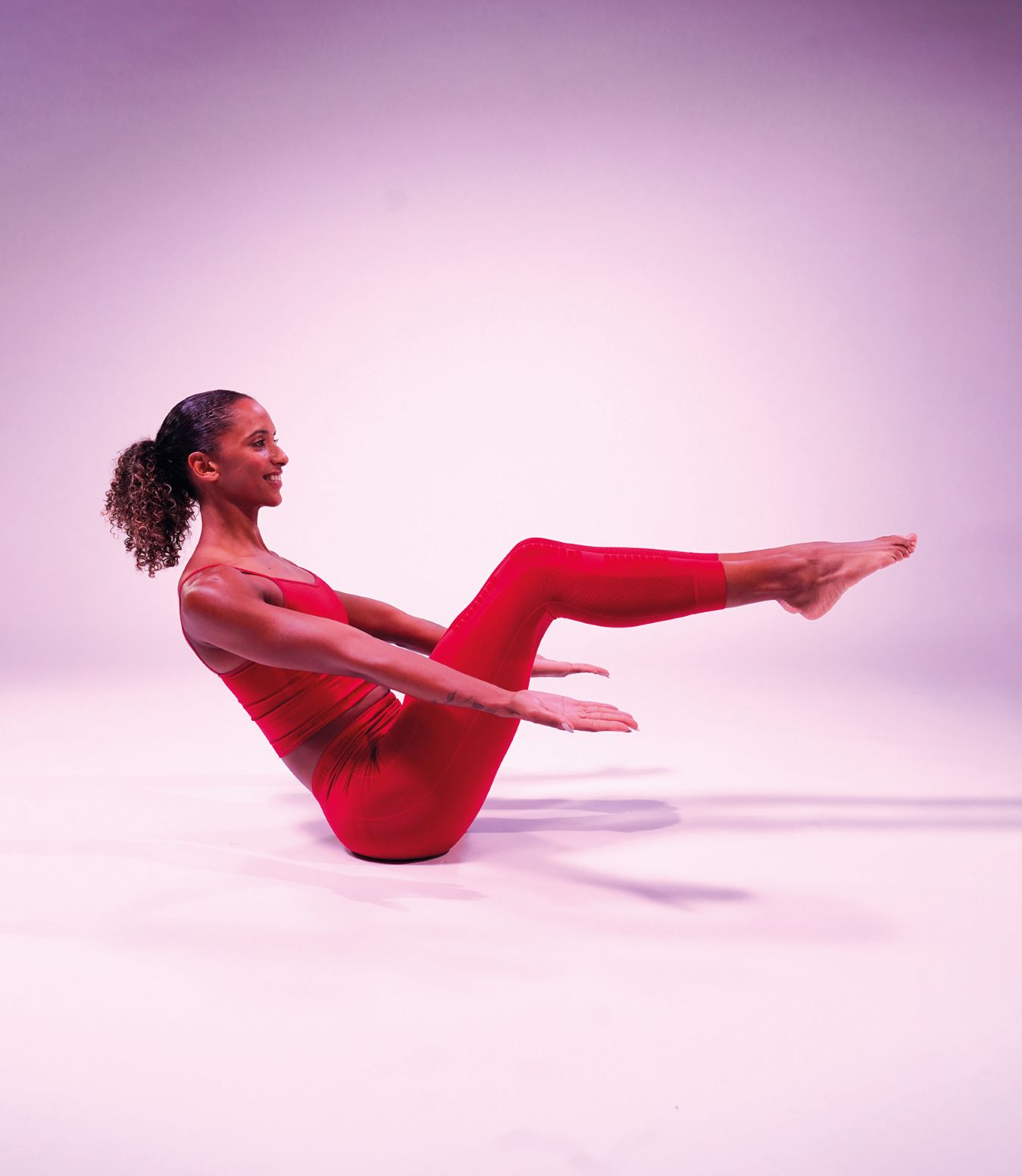
Boat Pose
(navasana)
Helps strengthen hip flexors, adductors and core.
How to do boat pose:
- Come to sit on the centre of your mat with bent knees, feet flat on the mat. Hold the back of your thighs, just below the knee. Roll your shoulders back and drive your chest forwards.
- Keeping your hands behind your knees, inhale and begin to lift your feet off the mat to bring your shins parallel to the mat. If you’re feeling confident, you have the option to point or flex the toes.
- Once you find your balance and core connection, loosen your hands from your thighs and keep them hovering just outside your knees with your palms facing upwards.
- If you want to advance this pose, try straightening your knees and extending your legs upwards.
- Challenge yourself to hold this pose for 30-45 seconds, breathing deeply and evenly.
- To come out of this pose, slowly exhale and bring your feet down to the mat with a neutral spine.
Visit fiit.tv for more yoga workouts from Lina Nielsen!

